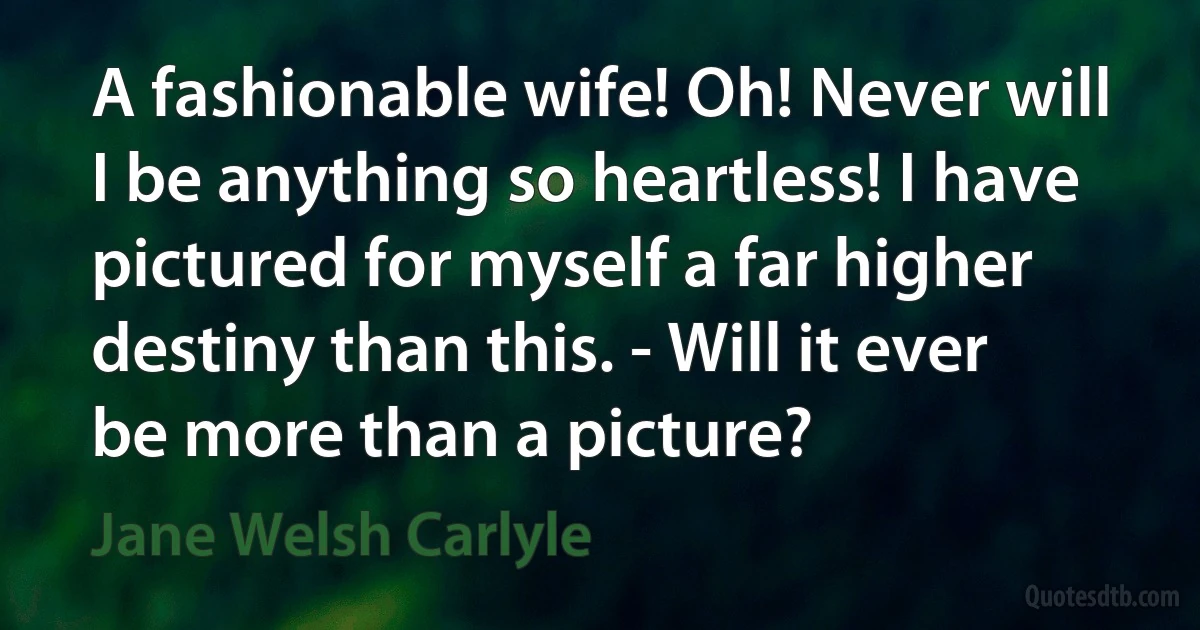Fashionable Quotes - page 8
[The] kind of thinking [...] which refuses to make distinctions among artists on the basis of color or nationality or gender, which insists on inclusion rather than exclusion, is hardly fashionable with the current tribalism known as multiculturalism and cultural diversity. But it represents [...] the only kind of thinking that can prepare the way for great art, and builds the path to a reconciled society.

Robert Brustein
It has been fashionable in the twentieth century not only to debunk myth, ... but to pretend that that reasonable and educated people could avoid the embarrassment of religion and the risk of metaphysics by sticking close to demonstrable facts and testable hypotheses. However, in the course of reducing our beliefs and hopes to certainties and proofs, we impoverished and deluded ourselves. The modern anti-myth reduced human life to a story without a point, a tale told by an idiot, a process without a purpose, a journey without a goal, an affair without a climax (Godot never comes), an accidental collision of mindless atoms. ... We have hardly noticed that economics, technology and politics have become the new myth and metaphysic. We haven't avoided myth and metaphysics, only created demeaning ones.

Sam Keen
It is fashionable to suggest that cyberspace is some kind of _island of the blessed_ where people are free to indulge and express their Individuality...this is not true....i have seen many people spill their guts on-line, and i did so myself until...i began to see that i had commodified myself. commodification means that you turn something into a product which has a money-value. in the nineteenth century, commodities were made in factories...by workers who were mostly exploited....i created my interior thoughts as a means of production for the corporation that owned the board i was posting to...and that commodity was being sold to other commodity/consumer entities as entertainment... [Cyberspace] is a black hole. It absorbs energy and personality and then re-presents it as an emotional spectacle.

Carmen Hermosillo
All fashionable clothes, as Thorstein Veblen has pointed out in his Theory of the Leisure Class (1899), are highly symbolic: materials, cut, and ornament are dictated only to a slight degree by consideration of warmth, comfort, or practicability. The more we dress up in fine clothes, the more we restrict our freedom of action. But by means of delicate embroideries, easily soiled fabrics, starched shirts, high heels, long and pointed fingernails. and other such sacrifices of comfort, the wealthy classes manage to symbolize, among other things, the fact that they don't have to work for a living.

S. I. Hayakawa
The "Schedule of Doctrines" of the most liberal Christian Church insists upon human depravity, and the "absolute need of the Holy Spirit's agency in man's regeneration and sanctification."
But what have we here? The "original calamity" was either caused by God or arose without leave of God, in either case degrading God to man. It is the old dilemma whose horns are the irreconcilable attributes of goodness and omniscience in the supposed Creator of sin and suffering. If the one quality be predicable, the other cannot be predicable of the same subject. Far better and wiser is the essayist's poetical explanation now apparently despised because it was the fashionable doctrine of the sage bard's day:-.

Richard Francis Burton
No man in this fashionable London of yours," friend Sauerteig would say, "speaks a plain word to me. Every man feels bound to be something more than plain; to be pungent withal, witty, ornamental. His poor fraction of sense has to be perked into some epigrammatic shape, that it may prick into me;-perhaps (this is the commonest) to be topsyturvied, left standing on its head, that I may remember it the better! Such grinning inanity is very sad to the soul of man. Human faces should not grin on one like masks; they should look on one like faces! I love honest laughter, as I do sunlight; but not dishonest: most kinds of dancing too; but the St.-Vitus kind not at all! A fashionable wit, ach Himmel, if you ask, Which, he or a Death's- head, will be the cheerier company for me? pray send not him!

Thomas Carlyle
Besides the cock-pit, the gaming-table, and the Alameda [tree-lined avenue], which is the popular promenade for the wealthy and the indolent, one of the most favorite pastimes of the females generally is shopping; and the most fashionable time for this is by candle-light, after they have partaken of their chocolate and their cigarritos. The streets and shops are literally filled from dusk till nine or ten o'clock; and many a time have I seen the counter of a store actually lined till a late hour, with the fairest and most fashionable señoritas of the city.

Josiah Gregg
The artefacts of a genius are distinguished by rich human content, for which he forges new images and new techniques, creates new styles. He sees himself as a unique eruption in the desert of the banal. He feels himself mysteriously inspired or possessed. The craftsman, on the other hand, is content to use the traditional materials and techniques. The more self-possessed he is, the better craftsman he will be. What pleases him is skill of execution. He is very concerned with his contemporary success, his market value. If a certain kind of political commitment is fashionable, he may be committed; but out of fashion, not conviction. The genius, of course, is largely indifferent to contemporary success; and his commitment to his ideals, both artistic and political, is profoundly, Byronically, indifferent to their contemporary popularity.

John Fowles
It is fashionable to say that all the causes we fought for have been defeated, but this seems to me a gross exaggeration. The fact that after six years of war we can hold a General Election in a quite orderly way, and throw out a Prime Minister who has enjoyed almost dictatorial powers, shows that we have gained something by not losing the war.

George Orwell
You know how I feel painting a skin which won't take the light well. And on top of that, it was fashionable at the time for women to be pale, so Madame de Bonnieres was as pale as wax, you may be sure. I kept saying to myself 'If only she could get a good steak inside her, just once!'.. ..and her hands! She put them in water before the sitting, to accentuate their whiteness.. .Just imagine! I come across one of the most charming women it is possible to meet, and she doesn't want to have any colour in her cheeks!

Pierre-Auguste Renoir
There is a persistent current that flows along undermining the integrity and motives of individuals, organisations and institutions. An insidious impression is thereby created that, for instance, the police are corrupt, British justice is flawed, the BBC is moribund and public servants are time-serving wasters of taxpayers' money. Can we really believe the fashionable theorists in the English faculties of our universities who have tried to tear apart many of our wonderful novelists, poets and playwrights because they do not fit their abstruse theories of the day?

Charles III
During a later period of his life, Rembrandt became bankrupt, mainly through his own extravagance... he could not help but collect things. At this time, his marvelous collection of paintings, jewels, swords, armor and precious costumes were publicly sold for a pittance. He had to leave his big, beautiful house in the fashionable part of Amsterdam and go to a very poor quarter. His original, fine house is now open to view. He dressed his subjects in oriental costumes, weapons and armor to give a rich, romantic and mysterious radiance to his paintings. At the same time he was a very down-to-earth Dutchman with a passion for reality. His art is the synthesis of a tremendous attraction to reality, with a need to draw things as they really were, and a desire for the exotic, the dramatic, the radiant, the unusual and the mysterious. p. 402.

Rembrandt
Numerical analysis has begun to look a little square in the computer science setting, and numerical analysts are beginning to show signs of losing faith in themselves. Their sense of isolation is accentuated by the present trend towards abstraction in mathematics departments which makes for an uneasy relationship. How different things might have been if the computer revolution had taken place in the 19th century! [...] In any case "numerical analysts" may be likened to "The Establishment" in computer science and in all spheres it is fashionable to diagnose "rigor morris" in the Establishment.

James H. Wilkinson
We've made a choice or I've made a choice recently to really say how I feel about the world and love and togetherness, and what I think would be great, you know? And I think when you sing about a very positive thing like that it's not fashionable until you die if I can be totally honest. It's not taken seriously until you're gone, but that's okay. (...) In the moment when you're alive saying it some people would say "Oh, fuck off." source.

Chris Martin



